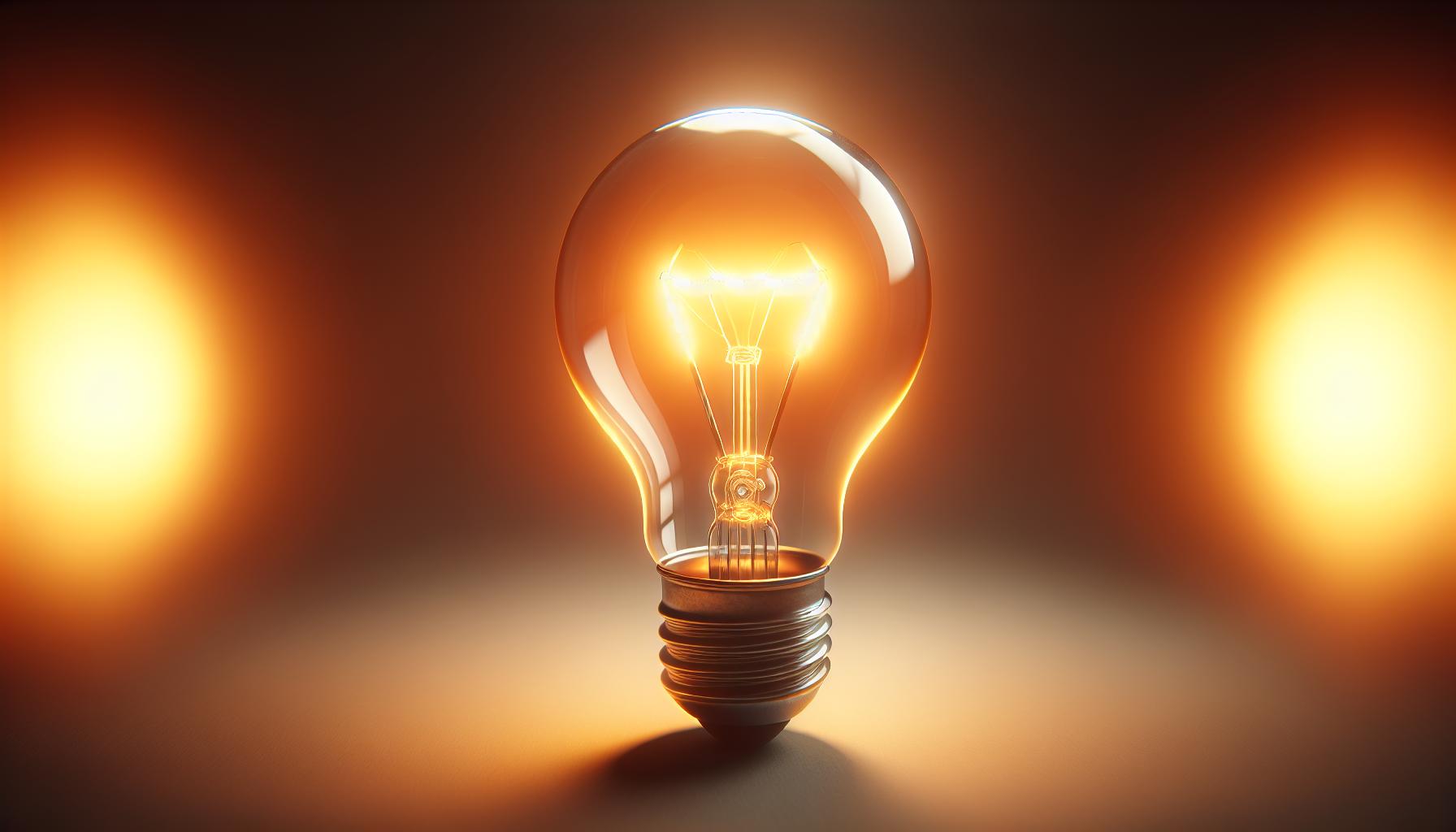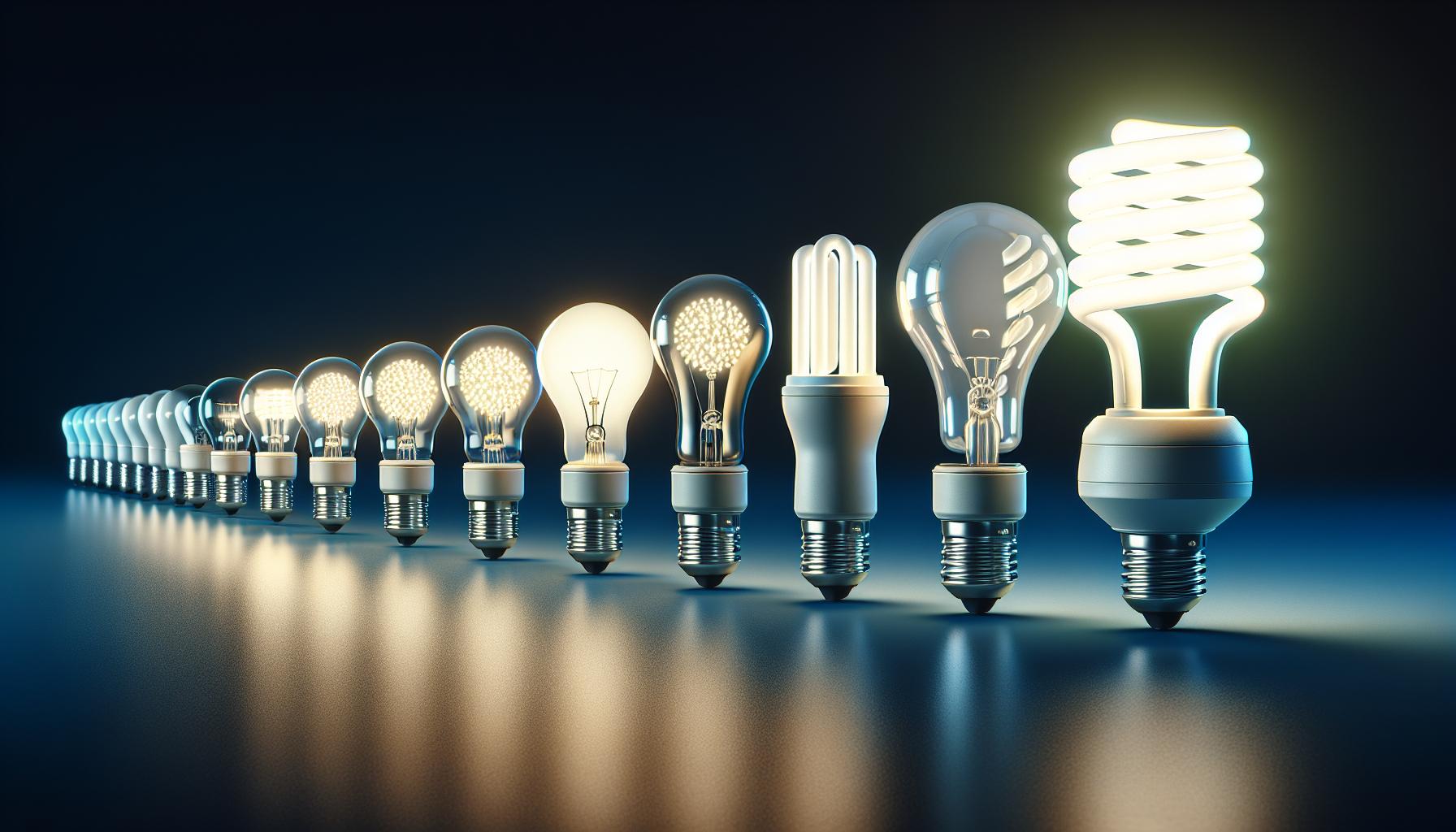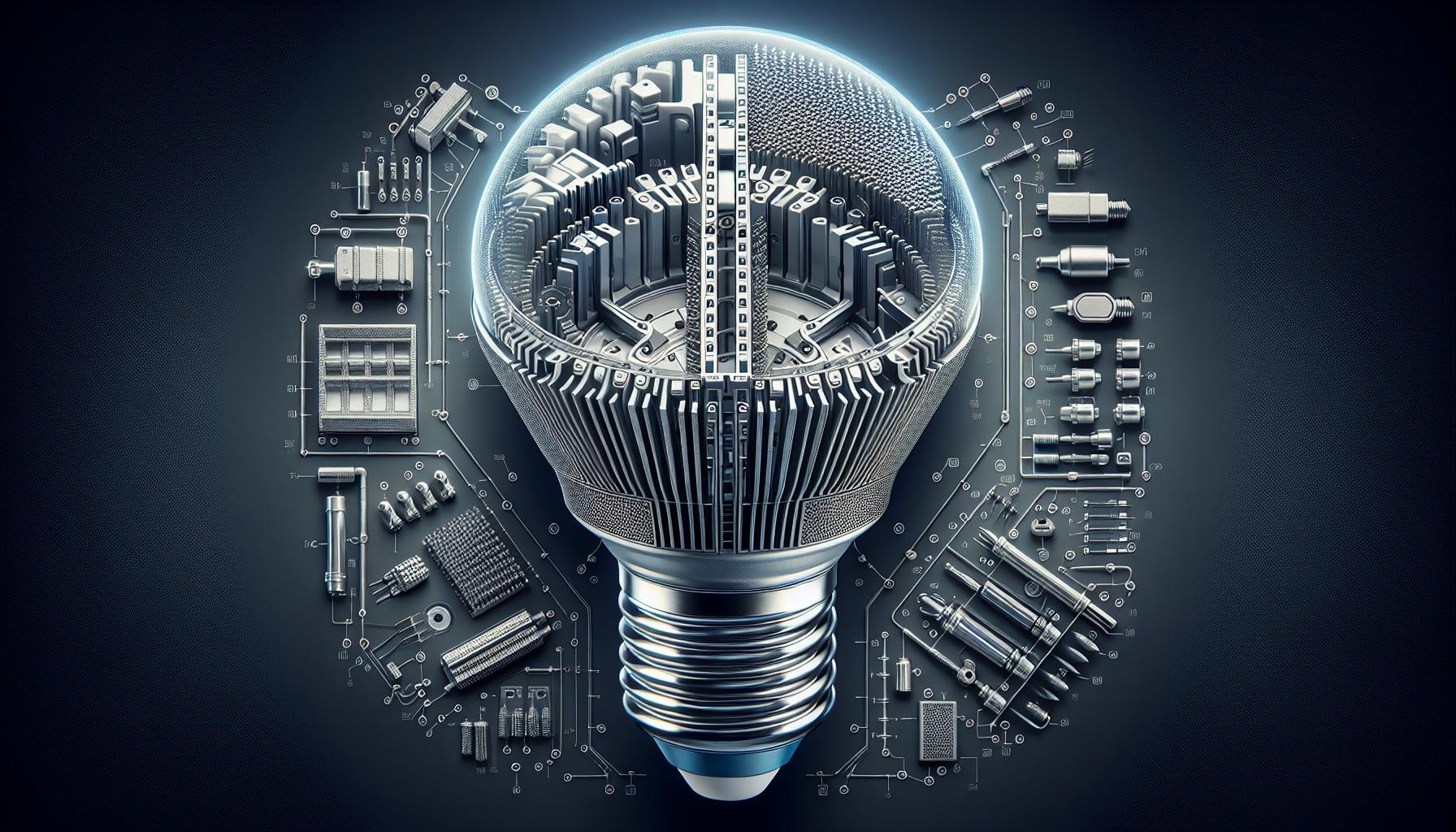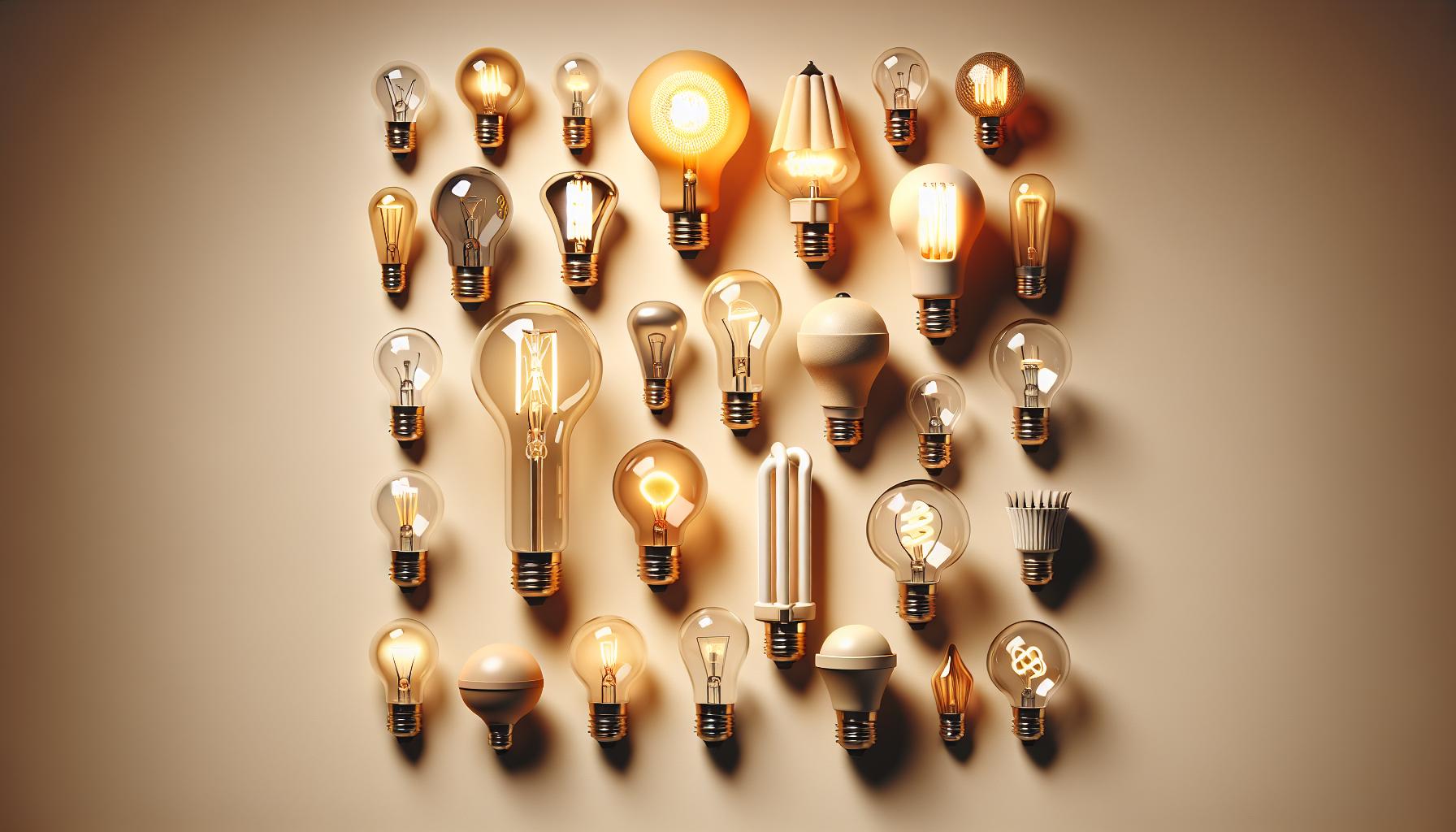Ever walked past a lamp and felt a wave of heat? You’re not alone! It’s a common experience, but have you ever stopped to wonder if light bulbs should be hot? It’s a simple question with a surprisingly complex answer.
Light bulbs have evolved drastically from the traditional incandescent to energy-efficient LEDs. Each type has its own heat signature, and understanding this can save you more than just an accidental finger burn. Let’s dive into the world of light bulbs and uncover the truth behind their heat.
History of Incandescent Light Bulbs
The incandescent light bulb is more than just a historic artifact; it’s the cornerstone of modern lighting. Thomas Edison and his contemporaries pioneered the technology in the late 19th century that would illuminate the world for over a century. You might be surprised to know that the first incandescent bulbs had a lifespan of only a few hours. Yet, these glowing orbs of glass were marvels of their time, representing the epitome of innovation and the dawn of a new era.
Over the years, incandescent bulbs underwent numerous improvements. Tungsten filaments replaced the original carbon filament, extending the bulb’s life and efficiency. Here’s an interesting fact: The design of the incandescent bulb has remained largely unchanged for decades. If you’ve ever replaced a bulb in your favorite reading lamp or ceiling fixture, you’ve interacted with a piece of history.
Despite advances, the traditional incandescent bulb has its drawbacks. They’re energy-hungry and convert less than 5% of the energy they use into visible light. The rest? It’s released as heat. So when you’re pondering if light bulbs should be hot, think about the inefficiency inherent in the early designs of incandescent bulbs. It’s this type of heat that has driven the shift towards cooler, more energy-efficient lighting solutions.
As a DIY enthusiast and light aficionado, you’ll appreciate the warmth that incandescent light brings to a room. Its soft, yellowish hue has a certain nostalgia and creates an inviting atmosphere. In contrast, newer LED technology offers a spectrum of color temperatures, from the warm, incandescent-like glow to crisp, cool daylight.
Understanding the developmental timeline of the humble incandescent bulb isn’t just for trivia night. It puts into context the evolution of light technology and our ongoing quest for efficiency and comfort in illumination.
How Incandescent Bulbs Produce Heat
You’re well into your journey of understanding light bulbs and by now, you know that warmth is just a byproduct of their operation. Incandescent bulbs, the classics of the lighting world, are notorious for getting hot. Ever wondered why that’s the case? Let’s shed some light on the subject.
In an incandescent bulb, electricity flows through a thin wire known as a filament, typically made of tungsten. When you flip the switch, an electric current passes through this filament, which then resists the flow of electricity. It’s this resistance that causes the filament to heat up to high temperatures — so high that it glows and produces light.
As a DIY enthusiast, you’d appreciate a deeper dive. The process is known as incandescence. It arises when any material becomes hot enough to radiate some of its thermal energy as visible light. For our tungsten filament, it needs to hit a temperature of about 2,500 degrees Celsius (4,532 degrees Fahrenheit) to glow that distinctive warm, yellowish light you’re familiar with.
But here’s the deal — the light is actually a side effect. Most of the energy goes into generating heat, not light. In fact, about 90% of the energy an incandescent bulb uses is emitted as heat. This is crucial to remember when you’re picking bulbs for different areas of your home. Incandescent bulbs might not be the best choice for spaces that you want to keep cool.
Talking about efficiency, there’s a dramatic difference between incandescent bulbs and their modern counterparts, like LEDs or CFLs (compact fluorescent lamps). These alternatives operate on different principles that allow them to produce the same amount of light with far less heat — and this, my friend, is a game-changer.
Remember how touchy incandescent bulbs can be when it comes to heat. You probably wouldn’t use them near delicate fabrics or in a small, enclosed lampshade. Their potential to contribute to room temperature might be just what you want in a cozy reading nook during winter but consider their limitations when planning your lighting scheme.
The Transition to Energy-Efficient Lighting
« How Long Can Light Bulbs Stay On? Maximize Lifespan With These Tips
Do Solar Light Bulbs Need Electricity? Uncover the Shocking Truth »
If you’re a DIY enthusiast or simply passionate about home lighting, you’ve probably noticed the shift toward energy-efficient lighting options. LEDs (Light Emitting Diodes) and CFLs (Compact Fluorescent Lamps) have taken center stage in the green revolution of home illumination.
Why the move away from incandescent bulbs? They’re not just hot to the touch; they’re also comparatively power-hungry. Only about 10% of the energy they consume is turned into visible light. Here’s what that means for you:
- Higher electricity bills
- More frequent bulb replacements
- Increased heat, potentially affecting your home’s cooling needs
In contrast, LEDs and CFLs are crafted to keep their cool while shedding light in your home. They use a fraction of the energy and last vastly longer. With an LED, up to 90% of the energy is converted into light. That’s a flip from the inefficiency of traditional incandescent bulbs.
Let’s talk numbers:
| Bulb Type | Efficiency |
|---|---|
| Incandescent | ~10% visible light, 90% heat |
| CFL | ~30% heat, the rest for light |
| LED | Up to 90% efficient, minimal heat |
Transitioning to energy-efficient lighting isn’t just a smart choice for the environment—it’s a clever move for your wallet too. You’ll spend less on utilities, not to mention less time on ladders swapping out spent bulbs.
Understanding the technology might stir up your DIY spirit. LEDs, for instance, might interest you with their versatility. They’re available in various colors and can be dimmed to set the perfect ambiance for any room or occasion. CFLs can also be a good choice, offering a softer glow and improved energy savings over incandescents.
Remember, swapping out your hot, old-fashioned bulbs for cooler, energy-saving lamps is more than a trendy move—it’s a step toward a cost-effective and environmentally conscious home. Whether you’re retrofitting an antique lamp or installing recessed lighting, the availability of diverse bulb shapes and bases means you can keep the character of your home lit up in a modern, energy-savvy way.
Understanding LED Bulb Heat Output
When you’re knee-deep in a DIY lighting project, you’re bound to come across LEDs. They’re the darling of the energy-efficient lighting world. But let’s get one thing straight: while LEDs are much cooler than incandescent bulbs, they’re not completely devoid of heat.
So, how hot do LED bulbs get? Unlike their incandescent predecessors that could heat a room with their wasteful energy conversion, LEDs operate at a significantly lower temperature. They’re designed to pull heat away from the diodes, which are the light-producing elements, transporting it to a heat sink typically located at the base of the bulb. This ingenious design keeps the diodes cool enough to run efficiently and last longer.
That’s not to say LED bulbs don’t warm up; they do. However, the heat is often not felt. In fact, after hours of operation, an LED bulb can be handled without the risk of a burn. This inherent coolness is particularly handy when you want to adjust lighting without waiting for the bulbs to cool down.
Here are some key points to remember about LED heat output:
- Efficiency: LED bulbs convert about 90% of their energy into light, making them vastly more efficient than incandescent bulbs.
- Heat Sinks: These are critical to the design and are what prevent LEDs from overheating.
- Longevity: Lower temperatures translate to a longer life, with LEDs often lasting upwards of 25,000 hours.
Enthusiasts like you will appreciate the subtle warmth that comes from these bulbs. They’re safe to touch and won’t significantly contribute to room temperature, making them an ideal choice for any of your favorite projects. As you incorporate LEDs into your lighting designs, remember that their heat management is a sophisticated combination of structure, materials, and even a bit of science that keeps your home lit and comfortable.
Factors That Contribute to Heat in Light Bulbs
When you’re knee-deep in a home DIY project, understanding your materials is crucial. Let’s dive into the factors that make your bulb toastier than a campfire marshmallow.
Wattage and Heat Output
Think of wattage as the bulb’s appetite for power. Higher wattage equals more energy consumed, which translates into more heat. It’s straightforward: the greater the energy, the hotter the bulb. Imagine running a marathon; the faster you go, the more you’re heating up.
Bulb Design
Bulb design matters. The classic incandescent is the couch potato of bulbs – not very efficient, turning most energy into heat. LEDs, on the other hand, are like the fitness gurus, channeling energy into light with only a little waste heat.
Material and Build Quality
Holding your bulb, you might notice its sturdiness. High-quality materials in LEDs work hard to manage heat, leading to a longer, cooler life. On the flip side, cheaper materials can mean a hotter bulb and a shorter life span—definitely not what your savvy DIY-self wants.
Environmental Conditions
Your bulb doesn’t live in isolation. It feels the room, sensitive to closed fixtures and dimming devices. A snug spot without airflow is a recipe for a mini-bake-off. Keep your bulbs cool with a bit of breathing room, just like you’d want a fan after a hot day of DIY achievements.
Electrical Power Delivery
Lastly, how you feed power to your bulb can stir up some heat. Inconsistent voltage from a shoddy electrical setup can create a bulb that’s unsure whether it’s coming or going, generating unnecessary heat. Ensure your wiring is up to par to keep your bulbs cool, calm, and collected – and your DIY projects shining bright.
Conclusion
You’ve seen that while light bulbs do get warm, it’s all about how they manage that heat. LEDs are champs at keeping cool by design, ensuring they shine bright for longer. Remember, the heat factor is influenced by a mix of wattage, design, and even the room you’re lighting up. So next time you’re swapping out a bulb, you’ll know that a bit of warmth is normal, but it’s the LED’s clever tricks that keep your space lit without a hitch. Stay savvy and safe with your lighting choices, and enjoy the glow!
Frequently Asked Questions
What makes LED bulbs more energy-efficient compared to incandescent bulbs?
LED bulbs convert about 90% of their energy into light, making them significantly more efficient than incandescent bulbs which convert a larger proportion of energy into heat.
Do LED bulbs produce heat?
Yes, LED bulbs produce heat, but it’s much less than incandescent bulbs. They have a design that disperses heat effectively, which keeps them cool and extends their lifespan.
How does the design of LED bulbs help manage heat?
LED bulb designs include a heat sink which pulls heat away from light-producing elements, preventing the bulb from becoming too hot and ensuring efficient operation.
Can LED bulbs handle varying environmental conditions?
LED bulb design, material, and build quality allow them to operate effectively in a variety of environmental conditions, which contributes to their versatility and safety.
Why can LED bulbs be handled safely without the risk of burns?
Unlike incandescent bulbs, which get very hot to the touch, LED bulbs remain cool enough due to their efficient heat management, making them safe to handle without the risk of burns.





